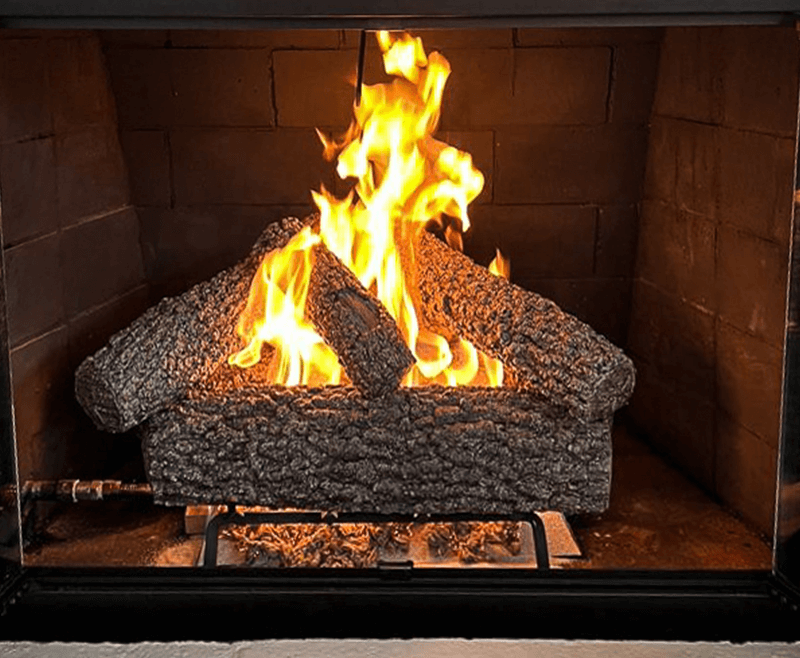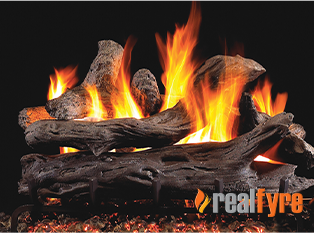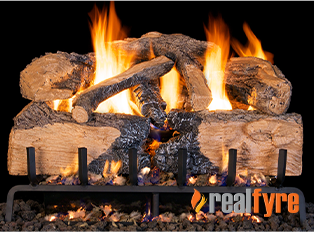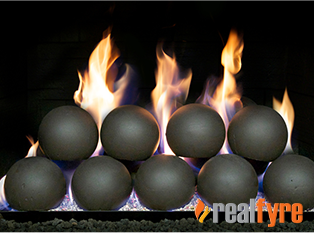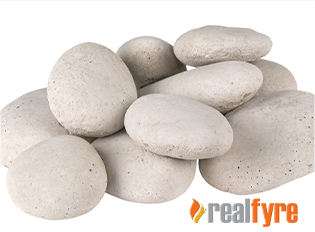Gas Logs for Fireplace
Not only do gas logs eliminate the need to chop, store, and haul firewood or deal with the hassle of starting and maintaining a fire, they also mitigate several safety hazards associated with burning wood. This includes reducing the risk of indoor and outdoor air pollution, as well as chimney fires. With the added convenience of being able to turn them on and off with a switch or remote control, and provide a consistent heat source, gas logs have become a popular choice for those seeking a hassle-free, low-maintenance, and cleaner alternative to traditional wood-burning fireplaces.
REQUEST QUOTE
What are gas fireplace logs made of?
Fireplace gas logs are artificial logs made of ceramic or refractory materials that are designed to simulate the appearance of natural wood logs burning in a fireplace. They are specifically designed to be used with gas fireplaces, which use either natural gas or propane as a fuel source.
Vented vs. Ventless Gas Logs
When it comes to choosing between vented and ventless gas logs, it’s important to consider the energy efficiency of each. Ventless gas logs, in particular, are highly energy-efficient and considered one of the best options for heating your home. In fact, these logs use 99% of the fuel burned and radiate heat directly into the room, making them an efficient source of warmth.
In California, the use of ventless gas logs is regulated by the California Air Resources Board (CARB). While ventless gas logs are legal in California, there are specific requirements that must be met in order to use them. For example, they must be certified by CARB and meet certain emission standards to ensure that they do not pose a risk to indoor air quality. It’s important to check with local building codes and regulations to ensure that the use of ventless gas logs is permitted in your area and to ensure that you follow all necessary safety precautions when installing and using them.
Are Gas Logs Fireplaces Worth It?
There are several reasons why someone might choose to replace their existing wood fireplace with gas logs. Here are a few:
Convenience: Gas logs are incredibly easy to use. They require no kindling or messy cleanup, and you can turn them on or off with a switch or remote control. This is in contrast to wood-burning fireplaces, which require you to build and maintain a fire manually.
Safety: Gas logs are generally considered to be safer than wood-burning fireplaces. There is no risk of sparks or embers flying out of the fireplace, and there is no creosote buildup in the chimney that can lead to chimney fires.
Cost-effectiveness: Gas logs can be more cost-effective than wood-burning fireplaces over the long term. While the upfront cost of installing gas logs can be higher than that of a wood-burning fireplace, gas logs can be more energy-efficient, meaning you may save money on heating costs in the long run.
Environmental concerns: Burning wood can release pollutants into the air, which can be harmful to both the environment and your health. Gas logs burn much cleaner and produce fewer emissions.There are several reasons why someone might choose to replace their existing wood fireplace with gas logs. Here are a few:
Ultimately, the decision to replace your wood-burning fireplace with gas logs is a personal one that will depend on your specific needs and preferences. However, for many homeowners, the convenience, safety, cost-effectiveness, and environmental benefits of gas logs make them an attractive alternative to traditional wood-burning fireplaces.
Overall, if you’re looking for a convenient, efficient, and safe way to enjoy the warmth and ambiance of a fire in your home, a gas log set may be the perfect choice for you.

APK-15 – Automatic Safety Pilot System with Remote
Learn More >
CONTACT US




